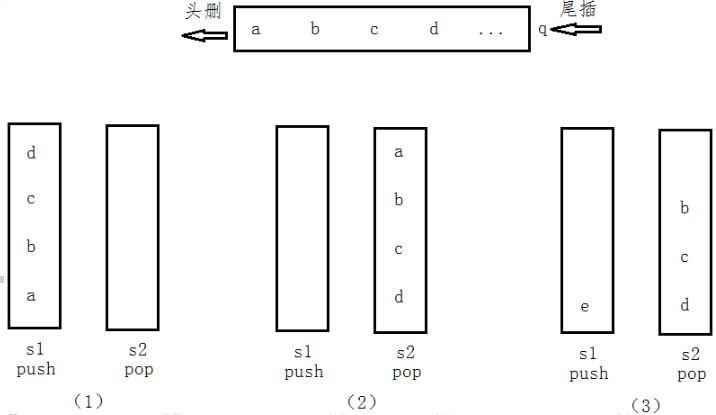Stack
Abstract
todo
Stack Problem
Valid Parentheses(括号匹配)
堆栈在处理递归问题时非常有用,对于括号匹配,是栈应用的经典案例:
Initialize a stack S: 初始化栈
Process each bracket(括号) of the expression one at a time.
If we encounter an opening bracket, then we check the element on the top of the stack. (遇到左括号则入栈)
If the element at the top of the stack is an openning bracket of the same type, the we pop it off the stack and continue processing. (栈顶元素和外面相匹配,则出栈继续)
Else this implies an invaild expression.
In the end, if we are left with a stack still having elements, then this implies an invaild expression. (栈不空则表达式非法)
Implementation:
简单版本:
def isValid(self, s: str) -> bool:
stack = []
for ch in s:
if ch in ['(', '[', '{']:
stack.append(ch)
else:
# for the case "]"
if stack == []:
return False
if ch == ')' and stack[-1] != '(':
return False
if ch == ']' and stack[-1] != '[':
return False
if ch == '}' and stack[-1] != '{':
return False
stack.pop()
return stack == []优化版本,基本思路一致:
def isValid(self, s: str) -> bool:
stack = []
mapping = {"]":"[", "}":"{", ")":"("}
for ch in s:
if ch in mapping.keys(): # 右括号,进行判断
if stack == []:
return False
if stack.pop() != mapping[ch]:
return False
else:
stack.append(ch) # 左括号,入栈
return stack == []Explaination:
- 我们遍历字符串 s, 遇到左括号则入栈,遇到右括号 (keys) 则弹出栈顶元素进行比较(在栈非空的前提下)
- 最终返回值:栈空则合法,等价于
return stack==[]
Validate Stack Sequence
给定入栈和出栈序列,判断是否合法:
def validateStackSequences(pushed: 'List[int]', popped: 'List[int]') -> bool:
i = 0
stack = []
for x in pushed:
stack.append(x)
while stack and i < len(popped) and stack[-1] == popped[i]:
stack.pop()
i += 1
return stack == []
# returen i == len(poped)注意到我们不改变 pushed 和 poped, 而是使用一个 stack = [] 作为辅助操作。
当没有找到与 stack 栈顶元素相等的元素时,不停地往 stack 中添加元素,
Next Greater Element
https://leetcode.com/problems/next-greater-element-i/
这道题目的大意是给定两个 List, 比如:
find_nums: [4, 1, 2], nums: [1, 3, 4, 2]
需要找出 nums 中 find_nums 对应的下一个比它大的元素,未找到就返回 -1, 在这个例子中的结果是:
res: [-1, 3, -1]
def nextGreaterElement(find_nums, nums):
# [4, 1, 2]
# [1, 3, 4, 2]
# [-1, 3, -1]
stack = []
dic = {}
for num in nums:
while stack != [] and stack[-1] < num:
dic[stack[-1]] = num
stack.pop()
stack.append(num)
res = []
for find_num in find_nums:
res.append(dic.get(find_num, -1))
return res当栈顶元素小于 num 时,在字典中添加栈顶元素, num 表示栈顶元素的 next greater element 是 num
stack 在上述例子中的顺序变化为:[1] -> [3] -> [4] -> [4, 2]
dic 为 {1: 3, 3: 4}
用两个栈实现一个队列
这是面试中的经典问题,应当熟练掌握。
所谓两个栈实现一个队列,应当是指实现队列的 尾插 和 头删 两个操作。
我们定义两个栈 S1 和 S2:
- S1:只进行插入数据
- S2:删除 S1 中的数据
!注意 S2 不为空时不要从 S1 中添加数据,类似于下图三的情况。

代码实现如下,思路就是使用两个栈,一个做插入,一个做删除:
# -*- coding:utf-8 -*-
class Solution:
def __init__(self):
self.s1 = []
self.s2 = []
def push(self, node):
self.s1.append(node)
def pop(self):
if self.s2 == []:
while self.s1:
self.s2.append(self.s1.pop())
return self.s2.pop()
return self.s2.pop()